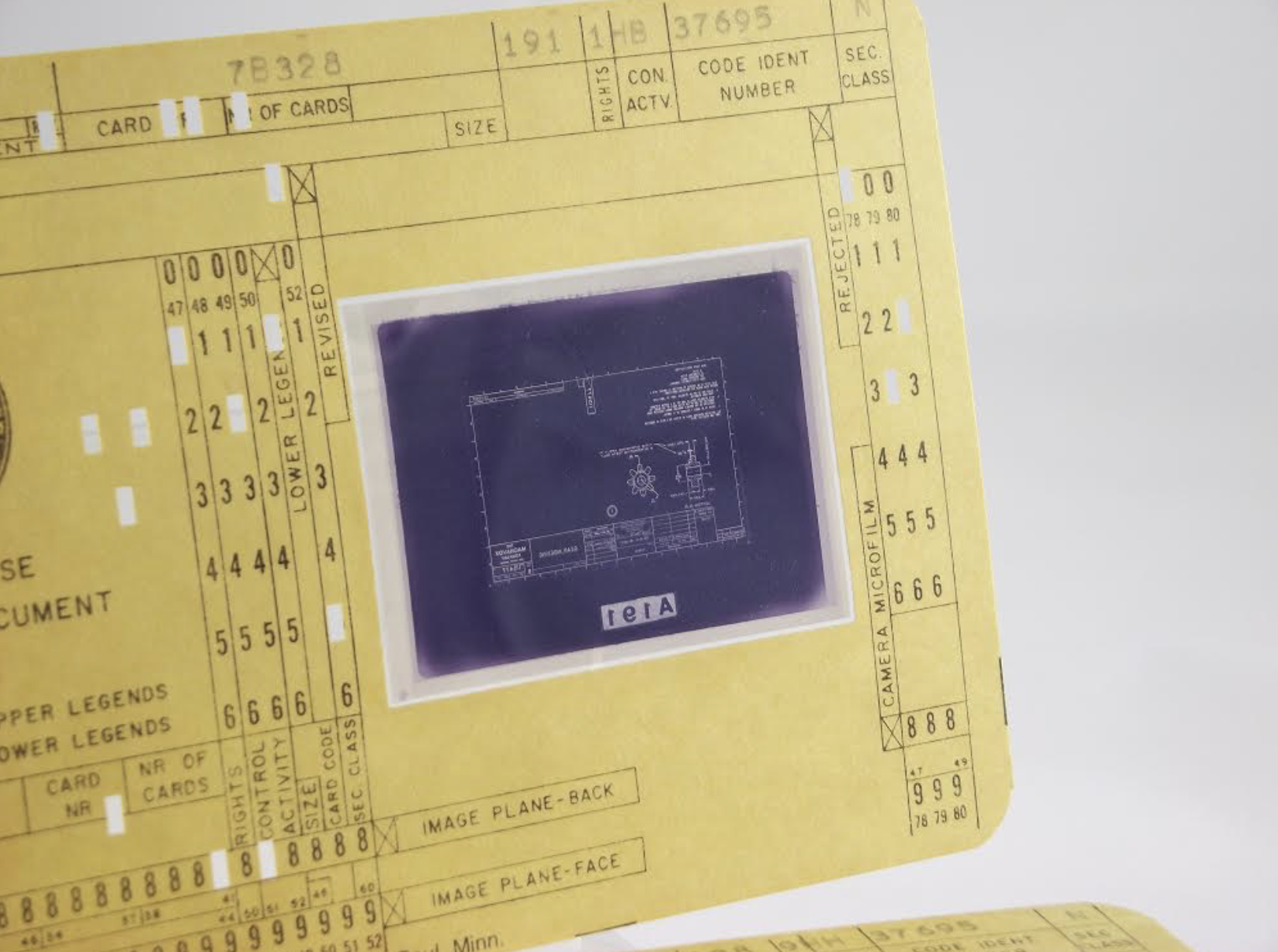Back before I was let go from an asbestos law firm, I made copious use of microform records. I say microform because I make the distinction between rolls of microfilm; the small sheets properly called microfiche; and aperture cards, which are computer punch cards with an embedded celluloid window containing a microform image. Aperture cards were commonly used for technical diagrams and accompanying metadata. The law firm had some scanned images of aperture cards, and at least one turned up in a stack of papers. I was asked about the hard copy aperture card we had by one of the firm’s two senior IT guys. These two were the people who conducted the second interview of my hiring process and, afterward, continued to be sort of a stealth HR department. Upon showing me the aperture card, he asked if I knew what it was. Fortunately by that time I did. It gave me the feeling someone in upper management put him up to finding out whether or not I knew what I was doing. Asking me about this obscure type of microform record was how he carried out the directive. More broadly, though, I hope nobody now needs information stored in such a manner. That shit is mostly gone forever.
At this job, I made numerous trips to libraries to retrieve microform telephone directory listings and newspaper advertisements pertaining to asbestos. These were much easier to work with than pressing bound periodicals onto the platen glass of the library’s card- or dime-activated copy machines. However, if there was a problem with the image as projected from the film, the only solution was to go to another microform-reading machine. Generally there was one working well and a few that didn’t function at all.
I used both microfilm and microfiche in finding materials for exhibit in asbestos cases. My curiosity and an instinct for job preservation led me to search online for other microform materials covering years that would be relevant to the work I was doing. There are many, many such microfiche documents available for sale. Contemporary mechanics are making the transition to working with diagrams on the screen of a greasy laptop and deciding to part with shelves of pocket paged binders containing index-card sized collections of microfiche. I was able to find an envelope of these, priced reasonably and pertaining to the years in which asbestos-containing motorcycle components were in production. While I knew this transition was taking place in auto repair shops, I also knew but was kind of in denial about the upcoming transition in asbestos law practices. Because of arrangements reached between class action defendants and plaintiffs many years ago, in order to be eligible for a monetary settlement a person’s claim needed to be for an asbestos exposure taking place before 1980. The group of people fitting the criteria was growing smaller and smaller as the years marched on. I should have taken the hint expressed in my supervisor’s nonplussed response to my find of motorcycle diagrams listing asbestos components. Asbestos litigation was winding down and I lacked the slickness to present someone else to get laid off in my stead. Those microfiche are still someplace in my apartment. Ebay then, and still now, carries complete microfilm collections of decades of The New York Times in addition to color microfiche cards of comic books, both DC and Marvel.
A common problem with microform records is that all such records of a particular publication have the same errors. This is because all were copies made from only one scanned image. Attorneys repeatedly asked me about a publication of Her Majesty’s Stationery Office, the British government print office, from just after World War II, regarding asbestos. I obtained PDF images of this report from a few different sources. There was a certain page which was blurry in each. The attorneys wanted me to find a copy where this page was clear, but there likely was none since the whole world was using copies of The British Library’s microfilm. The page of the original duplicated in the microfilm must have been wrinkled, probably water damaged, in that spot. When I came back to an attorney with bad news like this, I could never tell if they thought it was my own incompetence or that I’d reached the absolute limit of what was possible in the instance. I knew it was definitely the latter as I’ve found equivalently rare publications in my capacity as a library gopher and online book retailer. While it is possible that if I skulked around bookshops in London, I might happen upon this Holy Grail of asbestos litigation exhibits, it would not matter. Regardless of whether or not finding it was a flaw in myself or a flaw in the attitude expressed toward the printed page, asbestos litigation had stopped bringing in money for the attorneys the way it had for many years. Once that came to pass, I was out on my ass regardless of my capacities.

